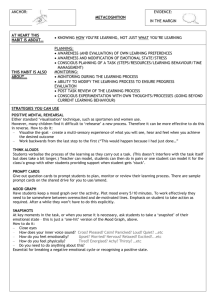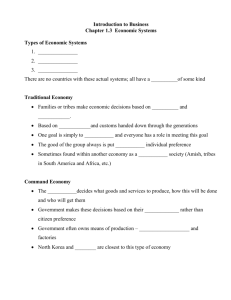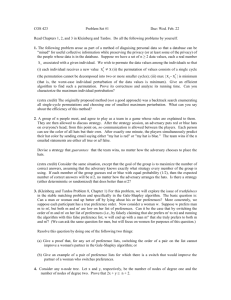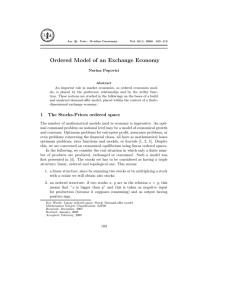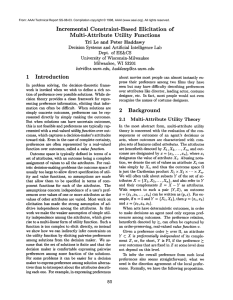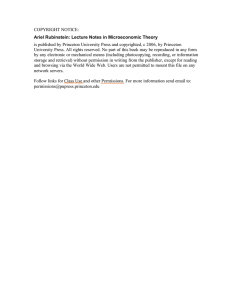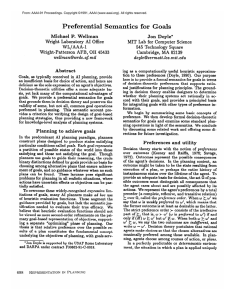Document
advertisement
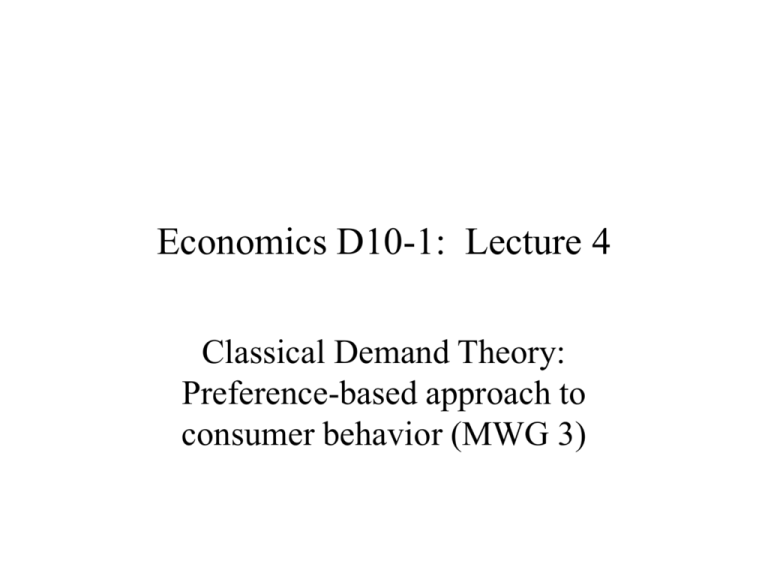
Economics D10-1: Lecture 4
Classical Demand Theory:
Preference-based approach to
consumer behavior (MWG 3)
Logical structure of the preference-based
approach
• Assumptions on preferences:
– Substantive
• Rational
– Complete
– Transitive
– Tractability
• Monotonic
• Continuous
• Convex
– Convenient special cases
• Homothetic
• Quasi-linear
• Utility function representation
and equivalencies
– Existence of continuous,
increasing function u
representing preferences
– Quasi-concavity of u
– Linear homogeneity of u
– Quasi-linearity of u
• Testable implications of utility
maximization:
– Law of Compensated Demand
– Slutsky symmetry
Consumer Preferences: Rationality and
Desirability
• Binary preference relation ≥ on consumption set X.
• Rationality: a preference relation ≥ is rational if it is
– Complete: x,y X, either x ≥ y or y ≥ x, or both.
– Transitive: x ≥ y and y ≥ z x ≥ z
• Desirability assumptions:
– Monotonicity: ≥ is monotone on X if, for x,y X, y>>x implies y
> x.
– Strong monotonicity: ≥ is strongly monotone if y≥x and y≠x imply
that y > x.
– Local nonsatiation: ≥ is locally nonsatiated if for every x X and
> 0 y X s.t.y-x≤ and y > x.
Consumer Preferences: other properties
• Convexity: Let X be a convex set. The preference relation ≥ is convex
if, x X, the upper contour set {y X: y ≥ x} is convex
• Strict convexity: Let X be a convex set. The preference relation ≥ is
strictly convex if, x,y,z X, y ≥ x, z ≥ x, and y ≠ z implies
ty+(1-t)z > x for all 0<t<1.
• Homotheticity: A monotone preference relation ≥ on X=L+ is
homothetic if x ≥ y tx ≥ ty for all t≥0.
• Quasilinearity: The monotone preference relation ≥ on
X = (-,)L-1+ is quasilinear with respect to commodity 1 if
x y (x + te1) (y +te1), where e1 = (1, 0, …, 0).
Consumer Preferences: Continuity
• Continuity (Alternative Definition):
– The preference relation ≥ is continuous if, x X=L+, the “at
least as good as sets” ≥(x)={z X: z ≥ x} and the “no better than
sets” ≤(x)={z X: x ≥ z} are closed in L+. (Equivalently, define
the “better than” and “worse than” sets to open in L+.)
• Lexicographic (strict) preference ordering L.
– For all x,y X=L+, xLy if x1>y1, or if x1=y1 and x2>y2, or if xi=yi
for i = 1, …, k-1 < L-1 and xk >yk.
• L is not continuous.
Consumer Preferences: utility function
representations
• Definition: The utility function u:X represents ≥ if, x,y X, u(x)
u(y) x ≥ y.
• Theorem: The preference ordering ≥ on L+ can be represented by a
continuous utility function u:L+ if it is rational, monotone, and
continuous.
• Proof:
(i) Let e = (1, 1, …, 1). Define u(x) so that u(x)e x. (The completeness,
monotonicity, and continuity of ≥ ensures that this number exists and is
unique for every x.)
(ii) Let x ≥ y. Then, by construction, u(x)e ≥ u(y)e. By monotonicity, u(x)
u(y). Let u(x) u(y). Again by construction, x u(x)e ≥ u(y)e y. Then,
by transitivity, x ≥ y.
Consumer Preferences: continuity of the
utility function
• Proof (cond.):
(iii) For continuity of u, we need to show that the inverse image sets
under u of every open ball in + are open in L+. Now,
u-1((a,b)) = {x L+: a < u(x) < b}
= {x L+: ae < u(x)e < be}
= {x L+: ae < x < be}
= >(ae) >(be)
By the continuity of ≥, the above sets are open in L+, as is there
intersection.


